Abstract
Progress in national and provincial control programmes directed against Echinococcus granulosus is reviewed. The results show that this parasite, because of the low basic reproductive rate in its domestic life-cycle, is unstable and is amenable to control or eradication by currently available methods. The difference between control and eradication is defined and some suggestions for extension of control are discussed.
Full text
PDF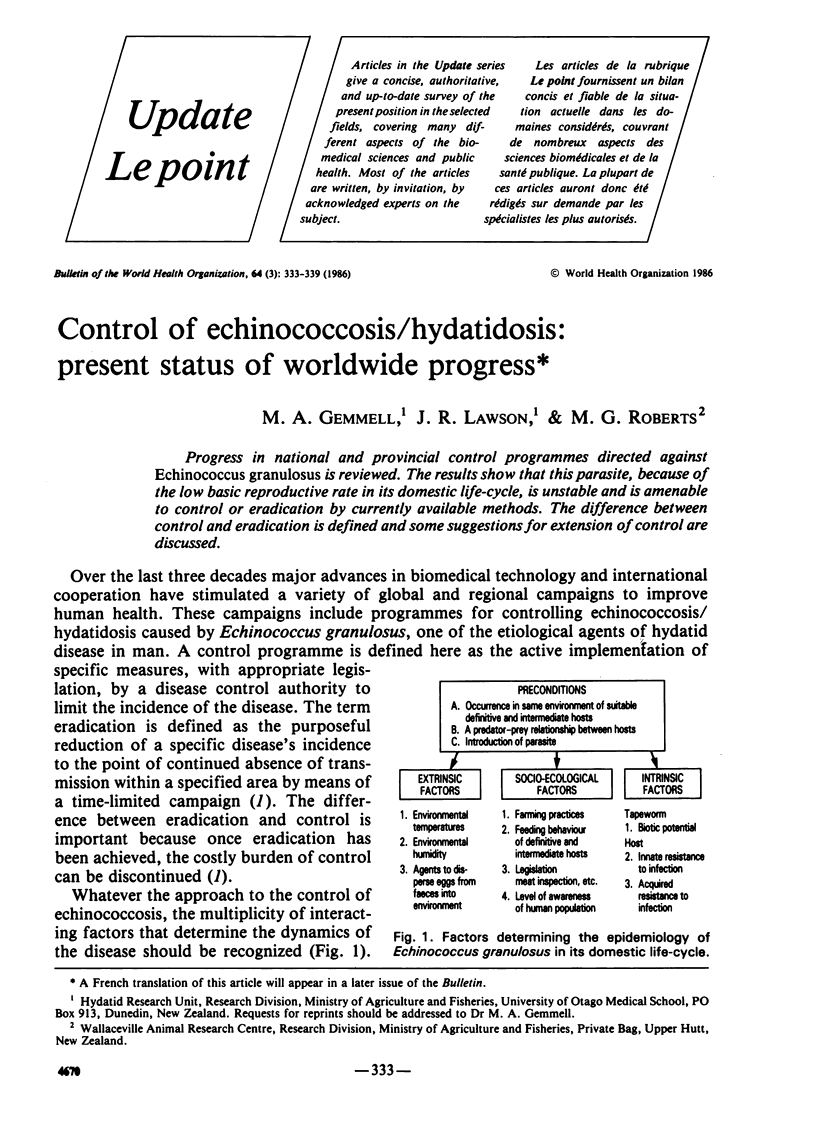
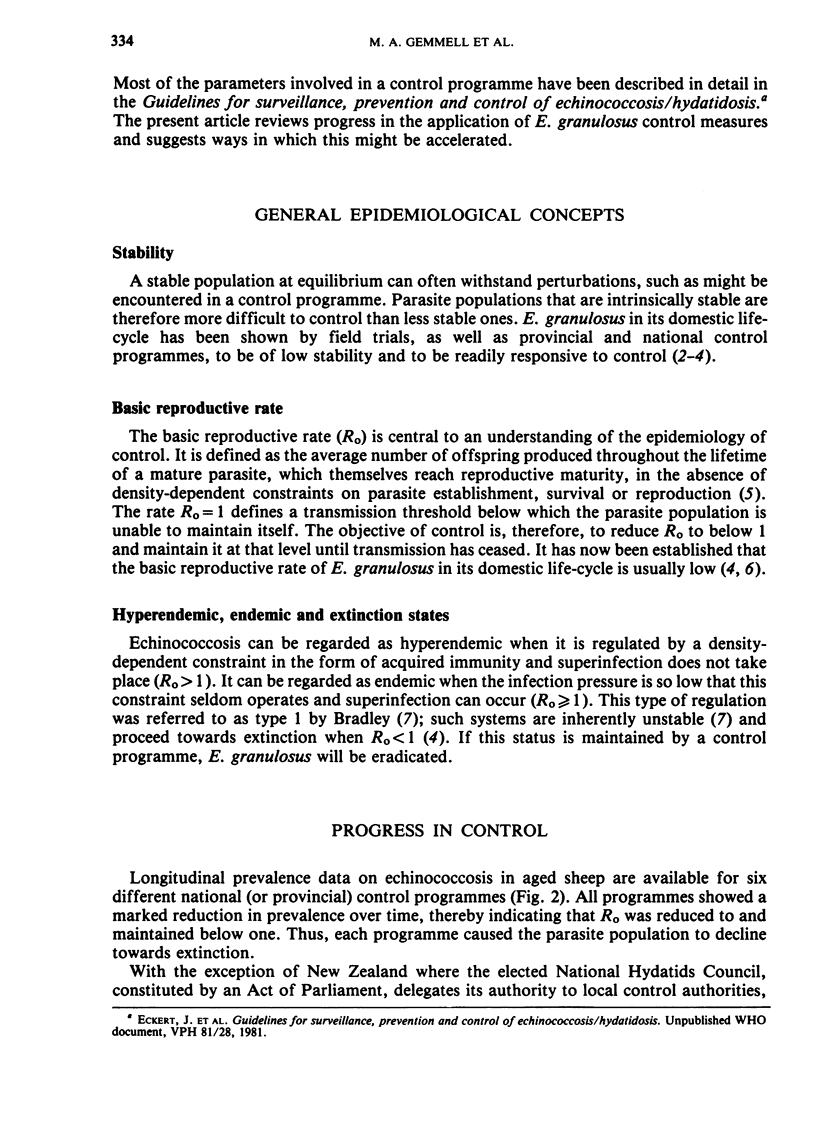
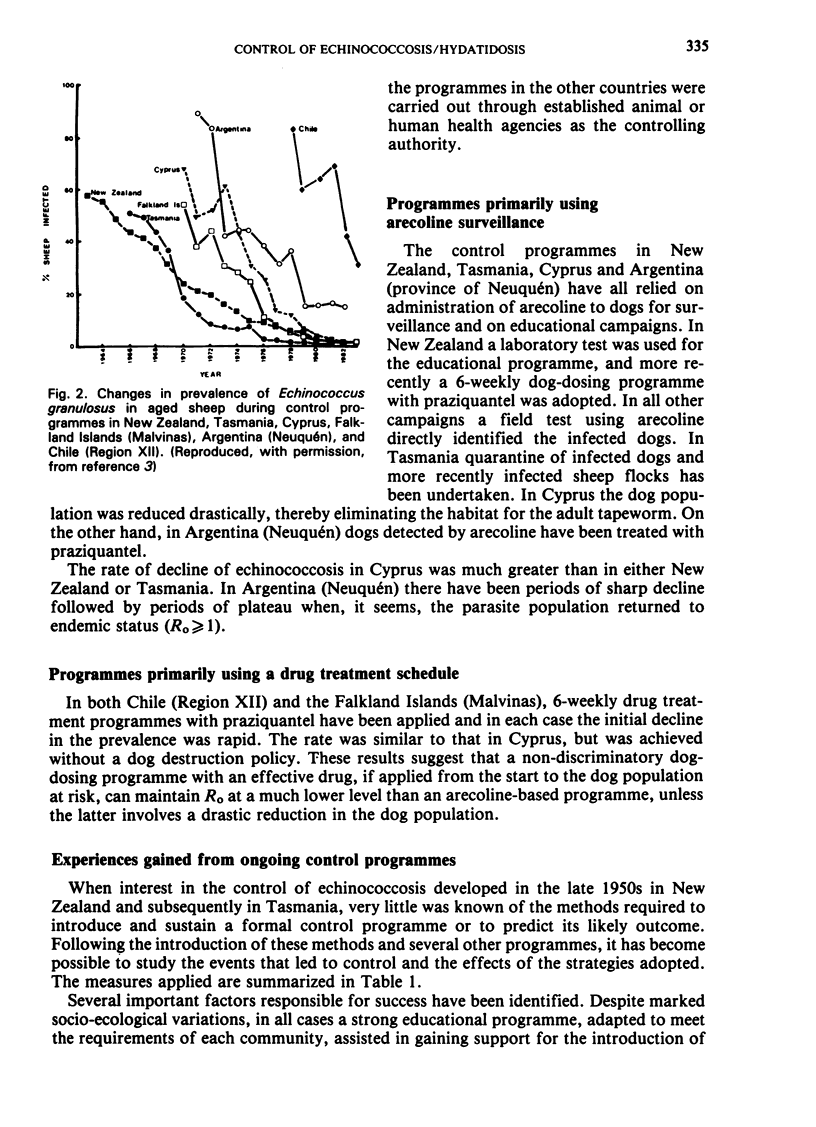
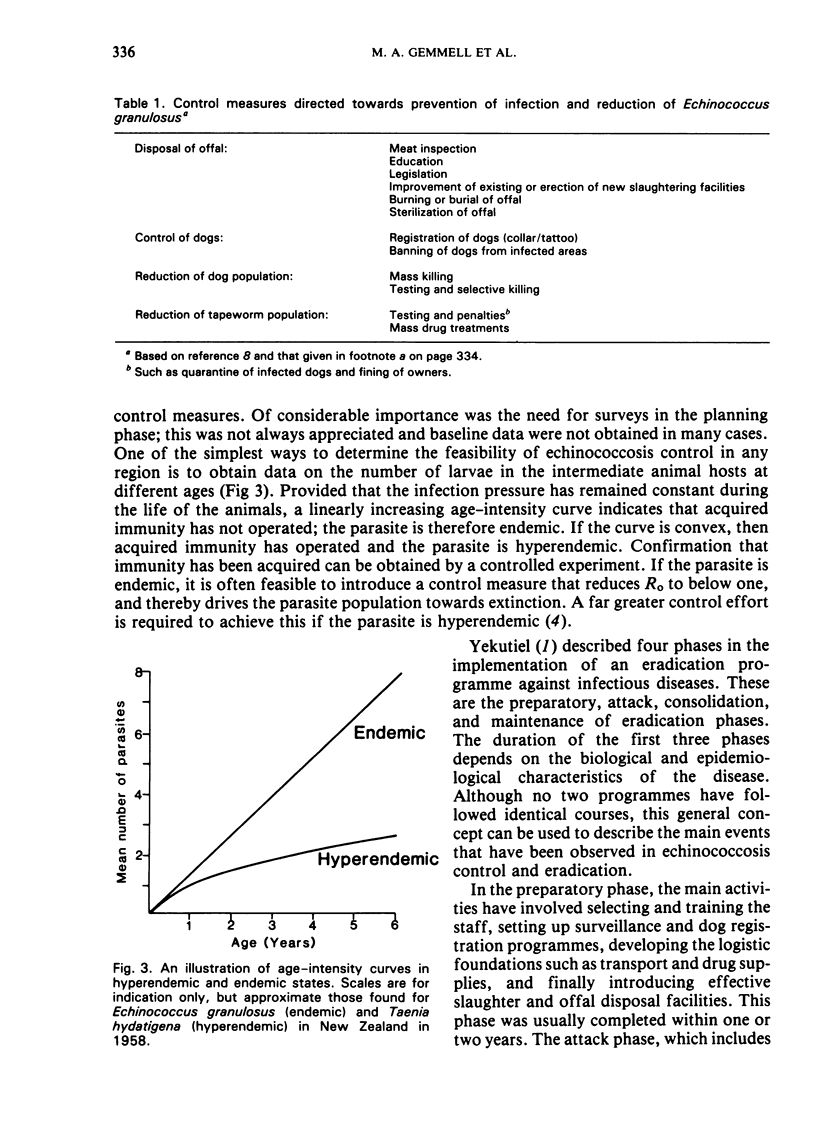
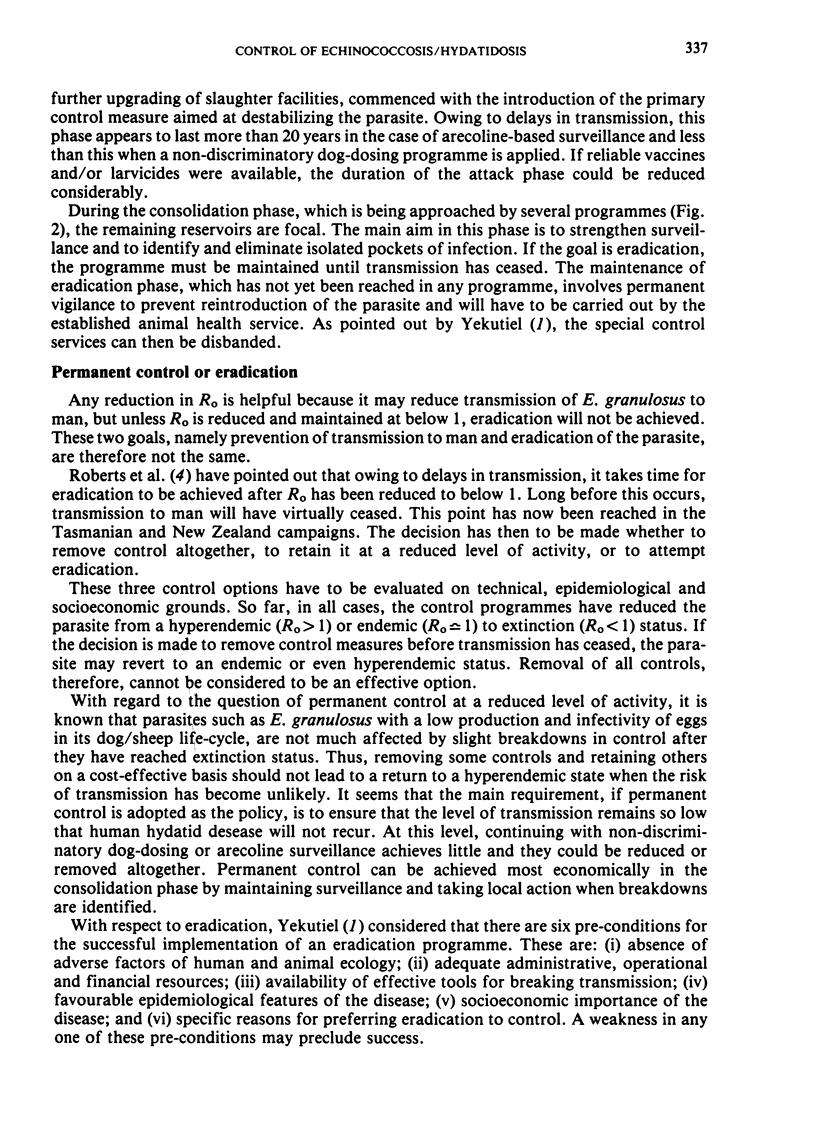
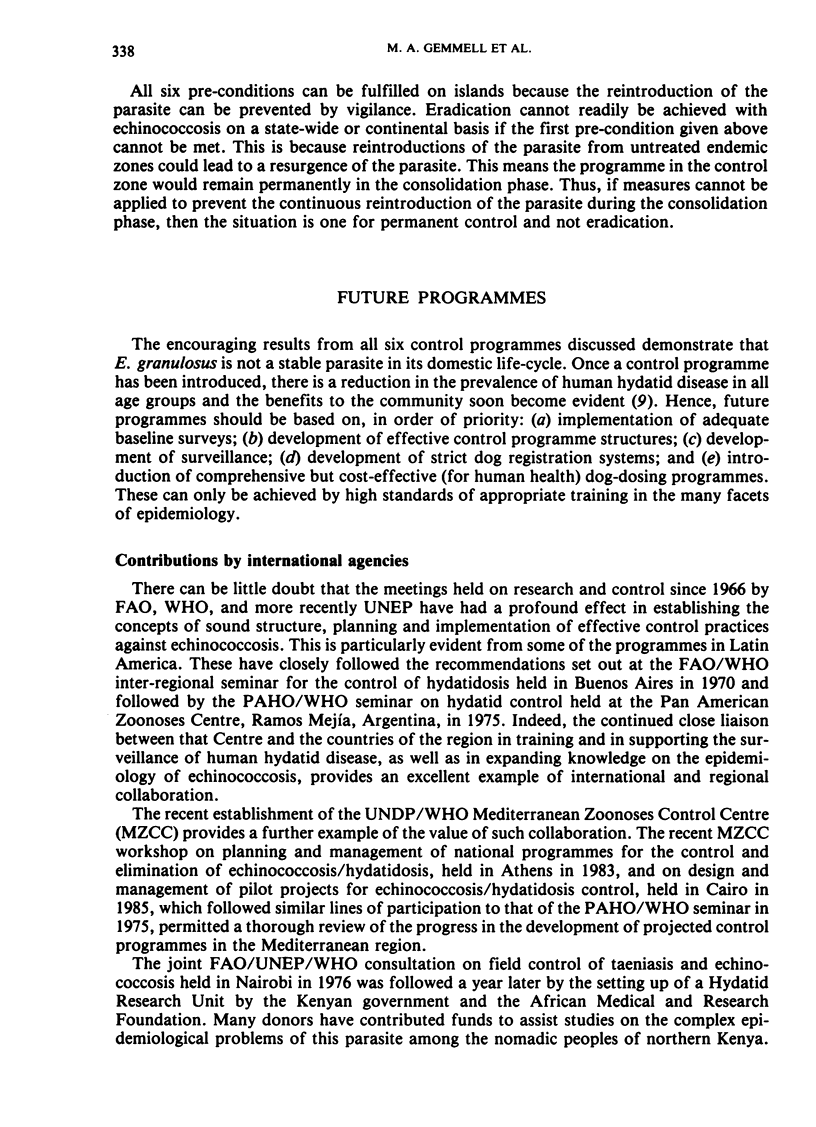
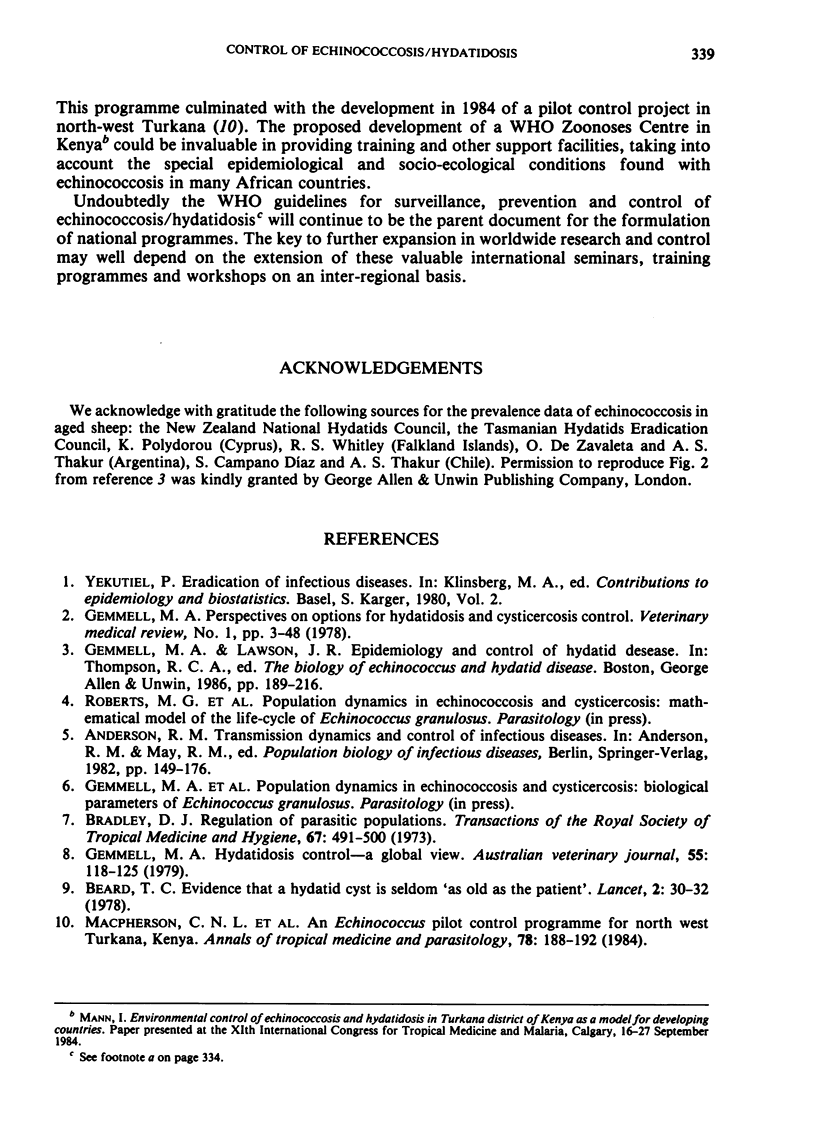
Selected References
These references are in PubMed. This may not be the complete list of references from this article.
- Beard T. C. Evidence that a hydatid cyst is seldom "as old as the patient". Lancet. 1978 Jul 1;2(8079):30–32. doi: 10.1016/s0140-6736(78)91336-3. [DOI] [PubMed] [Google Scholar]
- Macpherson C. N., Zeyhle E., Romig T. An Echinococcus pilot control programme for north-west Turkana, Kenya. Ann Trop Med Parasitol. 1984 Jun;78(3):188–192. doi: 10.1080/00034983.1984.11811798. [DOI] [PubMed] [Google Scholar]


